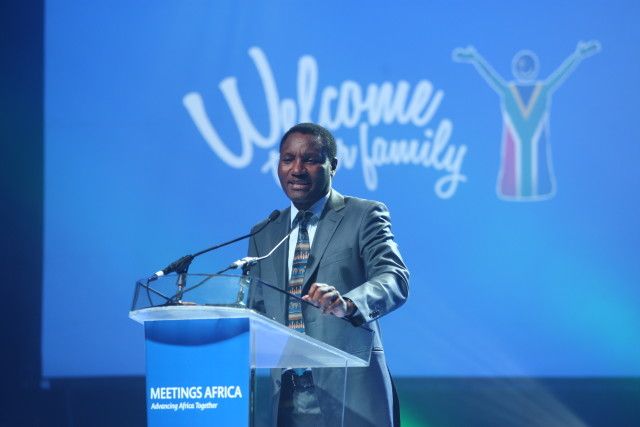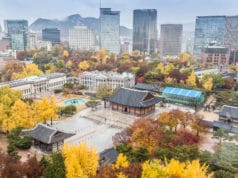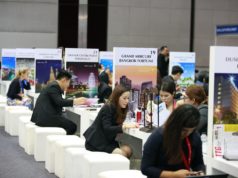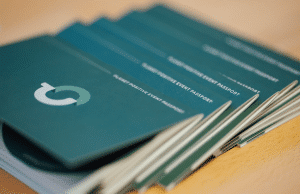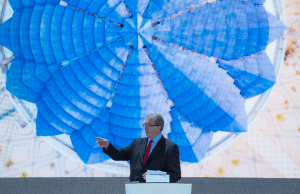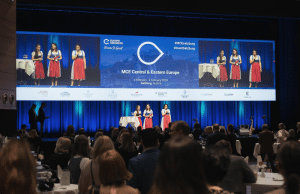KONGRES TELESCOPE by Robert Cotter
In South East Europe it’s fair to say that we know a bit about the demands of a regional MICE industry and the importance of regional cooperation. But what about an event where the region we’re talking about is a continent? And what when that continent is the vast land mass of Africa? This is the scope of Meetings Africa, the continent’s premier MICE event held in Johannesburg’s Sandton Convention Centre and that was celebrating its tenth anniversary this February, at which Kongres magazine was invited to join the celebration and learn about Africa’s MICE industry and its plans for the future.
Given the scope and diversity of countries across the huge continent, not to mention the varying natures and interests of the many governments on it, added to some of the external perceptions of Africa arising from disease and on-going conflict reporting, engaging every African nation’s MICE industry faces a significant number of challenges. What came across at Meetings Africa, however, is that once the right destination and formula can be found for an event and a robust organisational framework put in place, it might just turn out to be the best event you ever have.
Southern Springs
Southern Springs
Whilst Meetings Africa sets out to showcase the best of what the continent has to offer the lion’s share of exhibitors are from South Africa, the event’s home that continues to lead the way in the continent’s MICE presence on the global market. From Johannesburg to Cape Town and back up to Pretoria via Durban, the country has a wealth of excellent convention centres that can be backed up with incentives that are simply out of this world.
Meetings Africa’s own venue of the Sandton Convention Centre is state of the art and located in a buzzing business district of the city, a venue fit for any size of event. Alongside Johannesburg’s Sandton, Cape Town has its own International Convention Centre (CTICC) and in 2016 will open Century City Conference Centre, a brand new, high-tech meeting and event facility. Further east along the coast the city of Durban is home to South Africa’s oldest and biggest convention centre – although opened in 1997, a relative youngster on the international circuit – a capacious facility offering the largest column-free, multi-purpose event space in all of Africa with a huge number of potential configurations and an adjoining exhibition centre. The significance of these facilities to the industry, as well as of Meetings Africa to the country’s business profile, was strong enough to bring South Africa’s Minister of Tourism, Derek Hanekom, to give the opening speech and carry out the formal opening.
“In the past ten years the African business events industry has emerged from humble beginnings to become one of the most exciting sub-sectors on our continent’s tourism landscape,” said Hanekom. “We have demonstrated that we can function well, in fact very well, in a market that demands accessible, professional, value for money business event products and services.”
“We have already secured 177 major international association meetings for the next five years, thereby attracting a quarter of a million delegates with an estimated economic impacts of R3.5 billion (€269 million),” he added. “According to research conducted by the South African National Convention Bureau, 40% of all convention delegates attending meetings in South Africa will return in the next five years as tourists, boosting tourism growth and job creation years into the future.”
“This has only been possible because ours is a continent that offers so much,” continued Hanekom. “We are proud of our immense beauty and diversity. Our people are warm and welcoming and committed to growing the sector through service excellence. Our infrastructure is excellent and accessibility is improving rapidly. Our business events industry is ambitious, market-focussed and strategically organised – they stand ready to meet global market demands and to compete with the best the world has to offer.”
Boosting the strong competition alongside the significant South African presence at Meetings Africa, the southern springs of MICE growth have clearly spread to a number of other African countries, to Nigeria and Kenya in particular, but with good representation at the event also from Namibia, Zambia, Zimbabwe, Tanzania and Rwanda. The imminent opening of a trailblazing new MICE facility in Nigeria – the Calabar International Convention Centre – reflects the growth of the Nigerian economy as well as their ambitions to grow the MICE segment as part of it. Other African countries with similarly healthy growing economies will be sure to follow suit.
Only in Africa
The gala evening of the Johannesburg event was a genuine highlight, bringing in the world-renowned Soweto Gospel Choir and the phenomenal keynote speaker Siya Xusa– a young South African intellectual luminary who has transformed the possibilities of space travel through his rocket fuel research in the USA, but decided to return home to pursue it – who brought a standing ovation from the floor. An incredible evening of African food, music, dance and hospitality made it the gala evening to end all gala evenings – truly fantastic.
The following day we were invited to participate in a media day trip to the Johannesburg township of Soweto followed by an incentive trip to Durban, including a safari in one of South Africa’s many game reserves. ‘You know when you’re really alive when you’re living among lions’, wrote Karen Blixen, author of Out of Africa. This was our chance then to get a real flavour of the continent we were on through some incentives. And we certainly did.
A trip to Soweto is the chance to connect with the real spirit of Africa and better understand the roots of the anti-apartheid movement that have changed the country and continent, a chance to visit the houses of Nelson Mandela and Bishop Desmond Tutu, and a chance to exchange good wishes with the friendly and curious locals. It is a once in a lifetime incentive experience that can never be forgotten.
Complementing their incredible convention centre Durban offers incentive experiences at the other end of the spectrum: a helicopter ride along the Indian Ocean coastline over stunning, endless beaches and surf-splashed seas; taking an elevator to the top of the curved arch above the football stadium used in their 2010 FIFA World Cup; countless fine restaurants and leisure options, as well as the chance to visit traditional markets and, in this the epicentre of Kwazulu-Natal, a traditional Zulu market and all of the mysteries of life that abound in it.
In the area surrounding Durban, as with all of the South African cities, the chance to take a safari should never be passed up. This is pure Africa and the greatest reminder of the continent you are on and all of its wonders. Coming within metres of wild rhinos, giraffe, hippos, zebra and all the other animals otherwise only ever seen on the TV screen or a zoo is an exceptional experience. Waking up in my game reserve cabin at 3am to the sound of heavy breathing, pulling the curtain open to be met by the eyes of three zebra outside the window, was even more exceptional.
In his opening speech Derek Hanekom referred to Africa as ‘a continent in waiting’. So far Africa has been patient, and there are a number of challenges to face along the way, none less so than easing travel between African countries and engendering broader cooperation between African countries to build regional MICE offers for the international market. The shoots of its MICE industry are clearly starting to bud, however, and this wonderful continent will in the coming years increasingly show the world what it can do in hosting major events, in building important business relationships, and doing all this along with some of the best incentives on the planet.
Minister of Tourism Derek Hanekom was keen to stress that ‘Africa is open for business’. It most certainly is.


